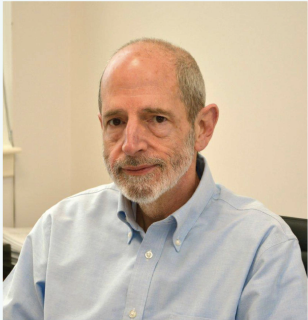Carl Cerco to Present at VIMS Seminar Series
 Carl Cerco, retired Research Hydrologist from the US Army Engineer Research and Development Center, will give a seminar on Friday, March 22nd titled, “Ecosystem Modeking and Management in the Chesapeake Bay – A Thirty-Five Year Partnership.”
Carl Cerco, retired Research Hydrologist from the US Army Engineer Research and Development Center, will give a seminar on Friday, March 22nd titled, “Ecosystem Modeking and Management in the Chesapeake Bay – A Thirty-Five Year Partnership.”
Details:
Friday March 22nd,
3pm in VIMS’ McHugh Auditorium, Watermen’s Hall, Gloucester Point, VA
Reception immediately following in Watermen’s Hall Lobby
Contact Harry Wang for more info
Abstract:
Ecosystem modeling and management have worked in partnership for more than thirty-five years to restore the Chesapeake Bay environment. The partnership has provided a platform for science, technology, and management that has found extensive use elsewhere.
The need for management models became evident in the mid-1980s with the revelation of widespread Chesapeake Bay hypoxia concurrent with the collapse of living resources. The first water quality model developed was a three-dimensional steady-state effort. This model guided the recommendation for a 40% reduction in nutrient loads to the Bay. The model also revealed deficiencies in technology, notably in the steady-state approach and in the prediction of sediment-water interactions. The next generation of models provided the framework that is still in use today. The Bay model, circa 1992, was the first successful coupling of a multi-dimensional, time variable hydrodynamic model, a multi-dimensional eutrophication model, and a predictive sediment diagenesis model. This model provided support for the initial decision to reduce nutrient loads by 40%.
Although the 1992 model was state-of-the-art, spatial resolution was inadequate in the western tributaries. The Tributary Refinements phase increased resolution and provided support for nutrient control programs in the tributaries. This phase also introduced living resources to the model framework including submerged aquatic vegetation, benthos, and zooplankton. Nutrient reduction programs in the Bay watershed were initially a voluntary, cooperative effort. New legal restrictions required development of a mandatory Total Maximum Daily Load for the Bay. The subsequent 2010 TMDL model combined a sediment transport model, increased spatial resolution, extended application period, and a completely revised estimate of watershed loads.
The advance of modeling for the Bay provides continuous evaluation and updating of management plans. The present model effort in the Bay is a 2017 Reassessment of the 2010 TMDL. This effort will likely be the final application of the initial model framework. The talk concludes with recommendations for the next generation of Chesapeake Bay Models.
Bio:
Dr. Cereo earned a Doctor of Philosophy in Marine Science from the College of William and Mary 1982. He is now retired from the Environmental Laboratory, US Army Engineer Research and Development Center. Dr. Cereo is a specialist, with over forty years’ experience, in pollutant fate and transport. He is the developer and curator of the CE-OUAL-ICM eutrophication model and has applied it in multiple locations in the US and overseas. CE-OUAL-ICM was the first practical, three-dimensional, eutrophication model to be coupled to a multi-dimensional hydrodynamic model and applied for multi-year time scales. Since its development, the model kinetics, including sediment diagenesis and sediment transport sub-models, have been widely disseminated and reproduced. CE-OUAL-ICM was employed in development of the 2010 Chesapeake Bay TMDL, and is in present use in the 2017 reassessment of the TMDL.
